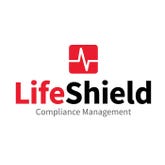Top 5 AED Questions Answered
- Sep 30, 2019

Customer Service Lead, Maddie Reaves, answers the Top 5 Questions often asked by many of our customers.
Q1: What is the difference between automatic and semi-automatic AEDs?
A1: When a patient goes down, and the AED is hooked up to them via the electrodes, it is going to analyze their heart rhythm. If an automatic AED determines that the heart is in a shockable rhythm (such as ventricular fibrillation), it will automatically administer the shock to restore a normal rhythm. In the same situation, if the AED is a semi-automatic, it will prompt the rescuer to press the shock button in order to restore normal rhythm.
Q2: Why do I need pediatric pads?
A2: Pediatric pads are different from the adult pads in that the joules (energy) that is pushed from the AED to the patient is reduced. A rule to go by when wondering if you should use pediatric pads on a patient, is that they can be used on someone who is 55 lbs. or lighter; or, 8 years old or younger.
Q3: How long do the pads and batteries last?
A3: This is going to depend on which AED you have. Generally, most AEDs have a 2 year pad expiration and 4 year battery expiration. However, there are a few that are different. For example, the Physio-Control LIFEPAK CR+ AED pads and batteries come in a combination pack, meaning they have the same expiration date, therefore are bought together. For details on your particular AED, you can ask our customer service team at 855-233-0266 or email customerservice@aed.com.
Q4: What is the warranty on your AEDs?
A4: Again, this is going to depend on which type of AED you have, with the exception of our re-certified options. All of our re-certified AEDs have a 3 year warranty with our company. New AEDs carry longer warranties, and those will be with the manufacturer. For example, a new Cardiac Science Powerheart G3 AED has a 7 year warranty, while the new Philips Onsite has an 8 year warranty.
Q5: What does re-certified mean?
A5: Re-certified AEDs can be units that have been traded in from customers that have changed brands, demo units from sales reps, etc. You may ask, “Why would a user trade in a working unit in favor of another brand?” This is a legitimate question, with many answers.
- Here are a few examples:
Maybe the customer was unhappy with the support of their local rep. - Maybe the local rep was able to show the customer that their technology was better for that user’s particular application (an EMS service would require a different AED, like the Cardiac Science G3 Pro that gives EKG readings than a movie theater because of the level of user training)
- Maybe the replaced AED wasn’t as durable as needed (a Fire Department is going to require a much more rugged AED, like the LIFEPAK 1000 or ZOLL AED Pro, than a school where the device only hangs on the wall.)
- Maybe the local EMS service and Hospital changed from ZOLL M Series to LIFEPAK 12s and the customer wanted to have the same brand because they get free replacement pads under the hospital’s contract.
There can be any number of reasons why the AEDs were traded in, but rest assured that before they find their new home, every used AED unit is put through rigorous testing and accessorizing to ensure that they satisfy ALL factory requirements and specifications. All used AEDs go through an 11-point inspection before they are officially recertified and can wear the 2nd Life Series label.








 CALL US:
CALL US: